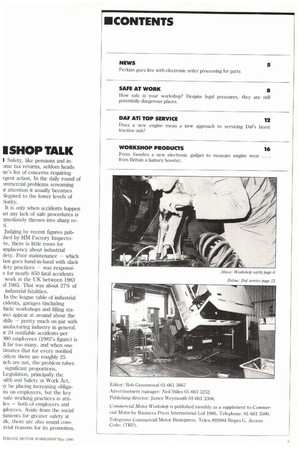I SHOP TALK
Page 13

If you've noticed an error in this article please click here to report it so we can fix it.
I Safety, like pensions and inarrie tax returns, seldom heads rie's list of concerns requiring rgent action. In the daily round of )mmercial problems screaming ir attention it usually becomes !legated to the lower levels of riority.
It is only when accidents happen tat any lack of safe procedures is imediately thrown into sharp re f.
Judging by recent figures pub;hed by HM Factory InspectoLte, there is little room for nnplacency about industrial deity. Poor maintenance — which ten goes hand-in-hand with slack ifety practices — was responsie for nearly 850 fatal accidents work in the UK between 1983 td 1985. That was about 27% of industrial fatalities.
In the league table of industrial cidents, garages (including hide workshops and filling stains) appear at around about the [ddle — pretty much on par with 3nufacturing industry in general. It 24 notifiable accidents per 300 employees (1982's figure) is 11 far too many, and when one timates that for every notified eident there are roughly 25 lich are not, the problem takes significant proportions. Legislation, principally the alth and Safety at Work Act, iy be placing increasing obligans on employers, but the key safe working practices is attiles — both of employers and iployees. Aside from the social pments for greater safety at rk, there are also sound comTcial reasons for its promotion.




















































































